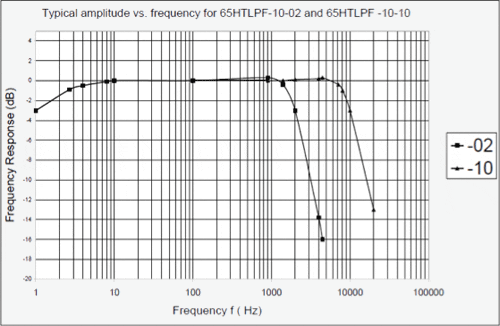Question
How can I find an uncomplicated solution for reducing unwanted high-frequency acceleration inputs before my signal becomes clipped/saturated? Although it remains unclear whether higher unwanted frequencies are present, my primary concern is to measure lower frequencies in this environment. My follow-on amplifier has an available filtering option, but I believe it too late in the measurement chain, by that stage, to catch unwanted higher frequencies. I am using an IEPE accelerometer, along with an adjustable gain standard piezoelectric signal conditioner.
Answer
Acceleration input signal pre-filtering, used prior to the voltage amplifier section of the charge amplifier, will help mitigate any undesirable higher frequencies in the measurement chain. Use of a low-pass filter with sufficient frequency roll-off prior to the voltage amplifier section of your signal conditioning is further recommended.
The accelerometer, for example, may feature an integral charge converter and follow-on voltage amplifier. Its design basically consists of a piezoelectric sensing element, which provides a high-impedance charge (pC/g) signal to a charge converter stage in the onboard amplifier, which then converts the high-impedance charge (pC/g) to a low-impedance voltage (mV/g). By incorporating a pre-filter, or low-pass (LP) filter, at this point in the chain, it is possible to reduce the effects of unwanted higher frequencies from saturating the input stage of the signal conditioner. Shock pulses can cause the accelerometer to resonate, which can also saturate the signal conditioner. For example, a 6 dB/octave RC pre-filter can be achieved for a particular cut-off frequency by utilizing the input capacitance (Ci) of the charge amplifier and the resistor in the feedback (Rf). In addition, a more advanced filter can provide improved roll-off rate.
An alternative is to utilize a custom mechanical filter for specific frequency attenuations. This option, however, would be something more than a simple solution, as mechanical filter physical size and the actual accelerometer mounting footprint may be compromised. An example of such an accelerometer that will provide desired input filtering is the Endevco
65HTLPF-10. It features a two-pole active Butterworth input filter, providing a frequency roll-off of approximately -12 dB per octave. Below is a typical frequency response plot which, unlike an unfiltered device, attenuates frequencies above the region of interest.

1. IEST-RP-DTE012.1
Himeblau, H., Piersol, A., IEST Recommended Practice 12.1, Handbook for Dynamic Data Acquisition and Analysis